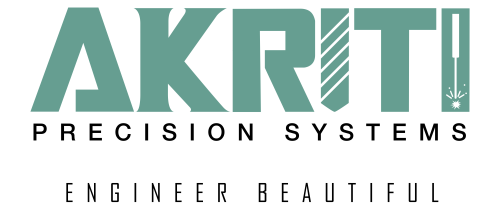How can we help?
< All Topics
Print
Anatomy of a CNC Machine
Updated
Components in a CNC Machine
The figure below points out some of the common parts of a CNC. Let us take a look at these parts, discuss and then identify the same or equivalent parts on the image of a real machine, the Akriti Mighty.
- Gantries / Linear Axis
- Gantries are the Linear movement system of a CNC. They either move the spindle, the workpiece, or a combination in 3D space to produce the complex, accurate outcomes we require. Commonly on CNC’s the first 3 Axis of movement are linear Axis.
- On our Mighty, The X, Y and Z gantries hold the spindle so that it moves in all directions. The workpeice remains fixed to the bed. This allows for a greater range of movement (and larger work pieces).
- Spindle
- This is the motor powering the cutting tool on the CNC. The spindle spins the cutting tool at an approximate range of 100 – 24000 RPM in order to remove material and mill the object.
- Controller
- The controller most commonly takes the form of a computer, or hand held control pad. This is used to execute the functions of the machine. It is the Human User Interface of the CNC.
- Dust Extraction / Chip Evacuation
- Dust extraction is used to remove loose excess material (chip) created during the milling process. This chip must be removed to create a clear and safe workspace and allow for the precise cutting of the object.
- Flood Coolant Pump
- The flood coolant pump is used to supply the cutting area of the CNC with coolant to help with the proper removal of chip and prevent the tool from breaking by overheating, or by hot chips re-welding to the tool. It is used when milling metals and some plastics.
- Akriti’s machines, being made out of composites have also a unique feature of being able to be fit with waterbaths, which trap dust efficiently and is far superior to vacuum or other dust removal methods while also keeping the cutting tool and workpiece cool .
- The flood coolant pump is used to supply the cutting area of the CNC with coolant to help with the proper removal of chip and prevent the tool from breaking by overheating, or by hot chips re-welding to the tool. It is used when milling metals and some plastics.
- Workpiece (Stock)
- The workpiece, or stock, is the piece of material used make the object. It needs to be prepared with flat edges and fixed securely to the CNC bed, this is called fixing or workpiece hold down.
- Below are some common accessories used for Workpiece hold down.
- Fixturing Table – A fixturing table is a level surface with holes or slots that allows various jigs and accessories to be attached to.
- Vacuum Bed – Common on table routers, vacuum beds use vacuum pressure to hold down a workpiece. For a vacuum table to work, the material needs to have a very flat surface to make maximum contact with the table, and it must be completely free of dust and anything that can cause a leak.
- Wasteboard –A wasteboard is a sacraficial piece of material to which the workpeice is fixed using screws. This is often used in combination with a vacuum bed.
- Chuck – Similar to vice, a chuck commonly has 3 or 4 Jaws which move radially, making them ideal for fixing circular workpeices to the CNC for machining.
Table of Contents



